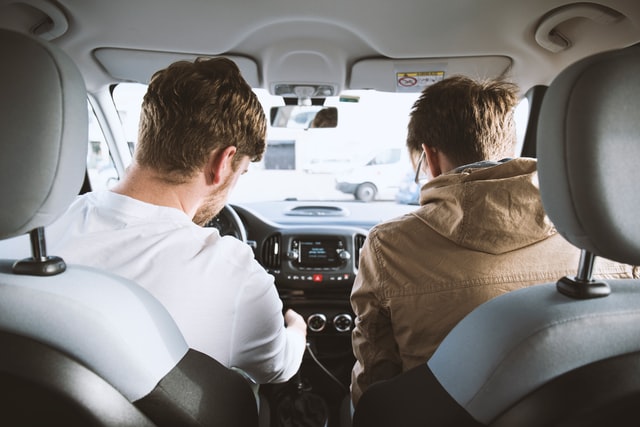All opinions are mine and mine alone.
The number one reason that people want to upgrade their car audio system is obvious. They want to improve the sound quality in their car. There are lots of ways that you can do this. You can try just one of these ideas and improve the sound quality of your car a little bit. If you try them all, you can turn your car into the ideal place to enjoy your music.

Upgrade Your Speakers
Step one to improve the sound is an obvious one. The factory-installed speakers that come with your car when you buy it do not begin to match the quality of third-party speaker installation. All you need to do is swap your car speakers for a higher quality set to give your music a boost in volume and clarity. You’ll get even more of a bass thump if you invest in a dedicated subwoofer too.
Upgrade Your Receiver
Once you have put in some decent speakers in your car, you will want to improve the signal that those speakers receive. Much like stock speakers, your car’s factory-installed receiver will cut corners when it comes to the audio output. For one, the power of the output will be too low to make the most of your upgraded speakers. Then there is the quality of its digital to analog converter (DAC). That is what makes the data signal from your CD or device and converts it to sound. The better the DAC, the more details will come through in your audio. Look for the best stubby antenna to get you started.
Play Higher Quality Music Files
A quality DAC can only do so much for you though if you’re going to be playing low-quality digital files for your music. If you are playing an actual CD, you will send a high-fidelity signal to your speakers, but if you are playing your music from compressed MP3 files, or worse, streaming audio, then the digital signal that you are starting out with is already missing the fine details that you need to be able to recapture to improve the sound quality in your car. To get the best sound, you will need to switch to lossless audio files. The higher the compression, the smaller the file, meaning that more albums will fit on your device. This is good news for your device but isn’t great for listening. Smaller files mean less information, which means that when you turn up the tunes in the car, gaps in the music data will make it sound thin, and distort much quicker. A good rule of thumb is to encode MP3s at a minimum of 320kbps, which has 2.5 times more data than the standard 128kpbs.
Use Your Best Connection
The way that you connect your phone to the car receiver makes a big difference in audio quality. Older technology will let you plug your device into an eighth-inch auxiliary cable. Newer tech will let you transmit the music that is on your mobile decide to the car stereo using Bluetooth. However, both of these methods will actually limit your audio quality. The auxiliary cable plugs an audio signal that is intended for headphones into your car stereo and won’t benefit from that DAC you invested in. Bluetooth will further compress your streaming audio files, so you lose all the detail that your new speakers can handle.
Don’t Play Through Your Phone
If you think that plugging an auxiliary line into the headphone jack on your phone will solve the phone’s compression problem, you would be wrong. This is better than a wireless connection, but the headphone jack is subject to the quality of your phone’s digital-to-analog converter, which is what turns digital files into sound waves. Your phone’s converter is designed to be good enough for small earbuds but still relies on too much compression to sound good on your car audio system.
Invest In An Amplifier
To really get the best performance out of your speakers and receiver, the best way to go is to invest in a new amplifier. Adding an amp will produce more power than an amp that is built into your receiver. A two-channel amplifier is even better. This will allow you to power your standard speakers while leaving a dedicated channel to power your subwoofer. A sub needs a lot of power to give the best results, and when power from the same amplifier is diverted to woofers and tweeters, there isn’t enough power left to give the sub the power it needs. A two-channel amp will give you the best sound.
Install Sound Dampening Materials
Road noise is the enemy of great sound quality in your car. If you know where to put them, you can add some sound dampening material to make the car’s interior quieter. Even when your music isn’t playing, you will appreciate the quiet when you drive. When you do turn on music, this is all you will hear. Knowing where to put these materials is one reason that it pays to have an expert install your new car audio system.
Go Easy On The Equalizer
When you’re driving, you probably want more bass in your sound, especially if you’re driving on the freeway. Increased road noise at higher speeds is hardest on lower frequency sound. Whether your car stereo offers basic bass, mid, and treble range controls, or a multi-band graphic equalizer, instinct says that you can boost your bass levels to fix the issue. This will actually only expose any flaws in your analog signal or speakers. It is better to leave the bass knob alone, and instead, marginally reduce your mid and treble levels, and turn up the volume knob instead.
If you really love to listen to music when you drive, you want to make your listening experience as good as possible. With these tips, you can do just that, and really enjoy all your favorite songs, sounding at their best, as you drive.



Speak Your Mind